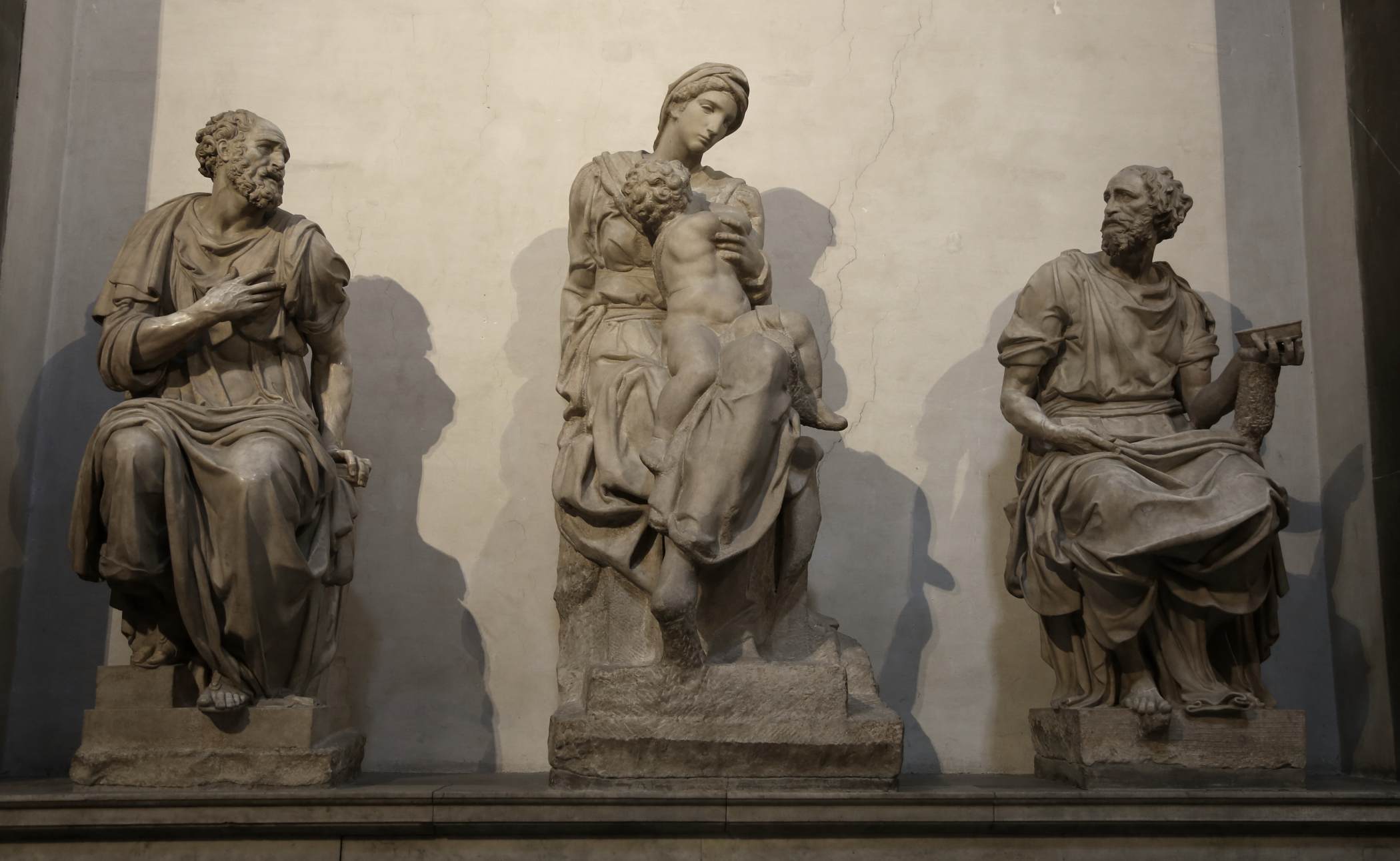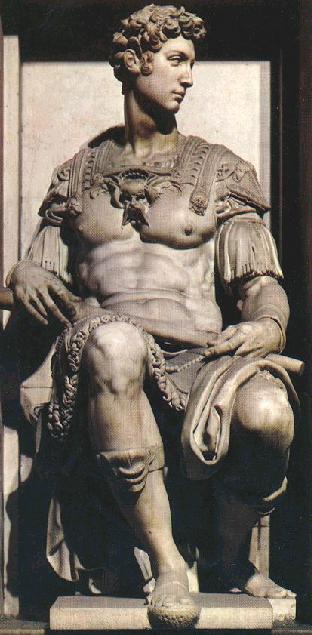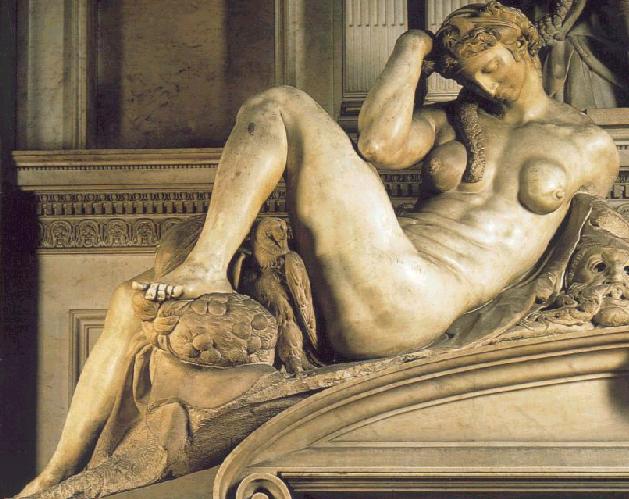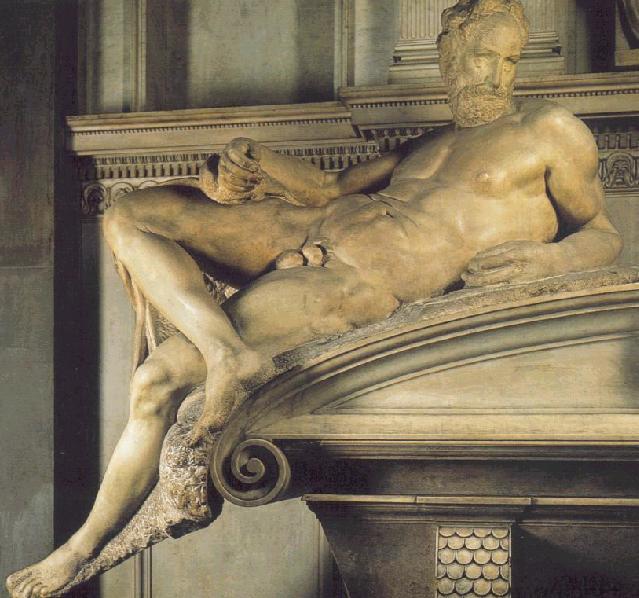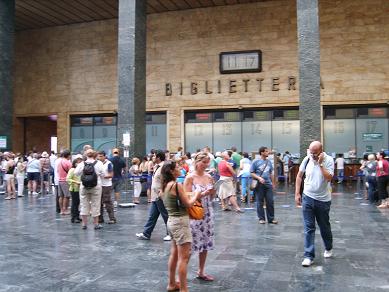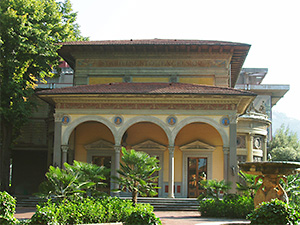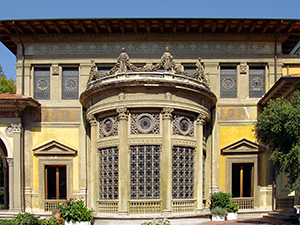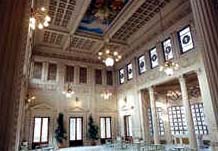|
The church itself was beautiful. Nicely proportioned, not at all gaudy (if anything understated). How could it be otherwise? Brunelleschi designed and built it. Somewhere it should be noted that the Medici were not royalty ... they were bankers who were more powerful than most royalty. They (prior to the Dukes anyway) knew that regal displays of wealth wouldn't sit well with the Florentines. Still, their nearly noble image of themselves was reflected, for example, in the fact that they used porphyry in the Old Sacristy (also designed by Brunelleschi): note the large purple circle in the middle of the table. Porphyry was a very rare marble traditionally reserved for emperors.
Michelangelo designed and executed the New Sacristy. Featured are the tombs of Giulano de' Medici, Duke of Nemours, and across the room Lorenzo de' Medici, brothers who served as co-rulers of Florence. Some other important members of the family are shown in the genealogical chart. Incidentally, the title Galfalonier derives from the gonfalone, the banner representing each of the nine communes in Florence. Representatives drawn by lot served for two months in the government (or Signoria). For a good, brief description of Medicis as a group, see the Wikipedia article. On April 26, 1478, in an incident called the Pazzi Conspiracy, a group including members of the Pazzi family, backed by the Archbishop of Pisa and his patron Pope Sixtus IV (he of the Sistine Chapel), attacked Lorenzo and his co-ruler brother Giuliano in the cathedral of Florence. Lorenzo was stabbed but escaped; however the attackers managed to kill Giuliano by stabbing him 19 times. The conspiracy was brutally put down, with measures including the lynching of the archbishop.
The Accademia and Michelangelo's David
At 12:30 Christine and Sabrina led us to the Accademia, home to Michelangelo's David (1504). The building itself houses many paintings and other sculptures - notably 15th and 16th century Florentine paintings by Paolo Uccello, Domenico Ghirlandaio, Sandro Botticelli and Andrea del Sarto and, from the High Renaissance, Giambologna's original plaster for the Rape of the Sabine Women - but David, the most recognizable statue in the history of art, dominates it all from the Tribuna that was ultimately built especially to house it. The statue is 517 cm (17 feet) tall, executed by the 26-tear-old Michelangelo from a block of Carrara marble which had been previously rejected for a prone David. It was originally meant to top the dome of the cathedral and, as a result, proportions are a little off when viewed closeup. There is a good, brief description of it in Wikipedia. David was originally placed in front of the Palazzo Vecchio (there is a copy in that original location today). The Florentines added a gilded wreath to his head and a gilt-bronze belt to cover his nudity. At that time the supporting tree stump was also gilded. In 1873, to protect it from weather, it was moved into the Accademia. I can honestly say that I have never seen a photo which does this statue justice. The look on David's face (whether he has already struck the blow or is about to) is impossible to describe. The place was jammed with people, though David of course towers over everything and everybody. We admitted that we were, at last, "arted out" and left to see about lunch.
We followed Sabrina's advice and found a wonderful little restaurant, the Buca Niccolini, just steps away from the Duomo (see the map, and click "hybrid"). We had an excellent spaghetti carbonara with red wine (Karen's actually had red wine in it, Spaghetti Urbiachi). Cost break down: 2 x Coperto (cover charge) 3,50; Vino (373 cl) 6,00; Carbonara 6,85; Ubriachi 6,85 -- Tot. € 23,20
After lunch we found our way to the Santa Maria Novella train station. Since we already had our return ticket, we had only to find out from the reader board which track the next "Lucca" or "Viareggia" train was leaving from, go there and validate (stamp) our tickets. There was one leaving at 14:08, track 5. There is a very handy guide to Italian train travel here; it includes a detailed examination of a typical timetable. We had a pleasant ride back to Montecatini Centro, arriving at 14:57, napped until dinner time. After a Milano-Torino, we ate with Gloria Valone, Pamela and Denny Hovik (all CO), Howard Meeks (FL), and Richard Flower (CA). With this we had dined at least once with everyone in our tour group.
A bunch of us attended a 9:15 concert (12 Euro each) at the Alone storico (histoical hall) of the Excelsior Terme (Bath House). Mezzosoprano Anna Aurigi and tenore Saulo García Diepa, accompanied on the pianoforte by Ettore Constabile, performed brief songs by Rossini, Bizet, Donizetti, Puccini and Verdi, along with more modern and popular works after the intermission. Most were solo presentations, the tenor alternating with the mezzo. They did do several duets, among which was a memorable "Merry Widow" (Lehár), during which they surprised everyone by interrupting their song with an unsung dance. The encore was a funny meow duet by Rossini. It was a delightful evening.
|


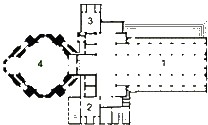






.jpg)
.jpg)


